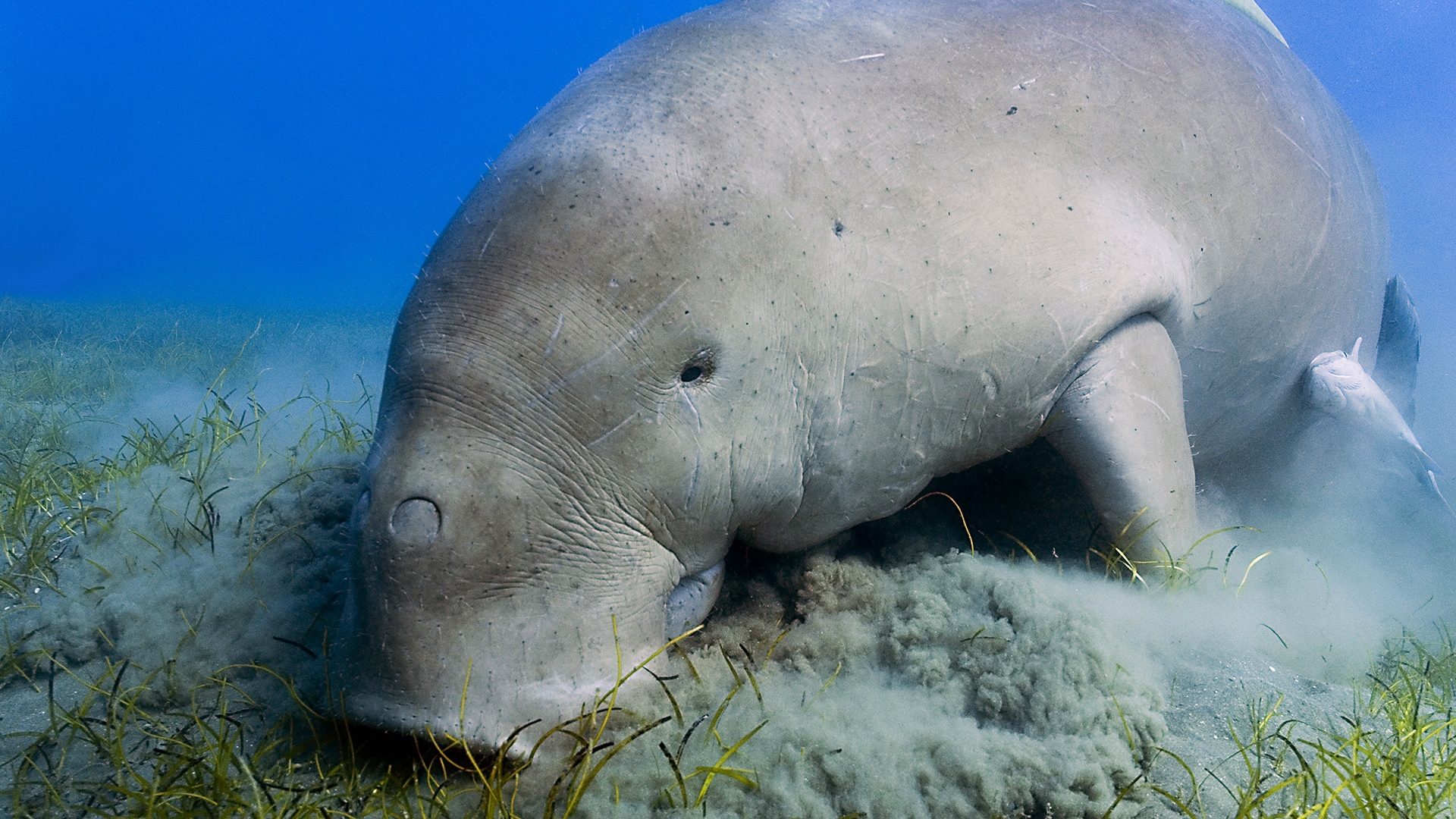Tubby 'mermaids' vanished from Chinese waters 2 decades ago, now declared extinct
Dugongs, or sea cows, are thought to have inspired tales of mythical mermaids.

Dugongs, the pudgy marine mammals that once inspired homesick sailors' fanciful tales of mythical mermaids, are now extinct in China, new research shows.
For hundreds of years, these gentle giants, commonly known as sea cows, have swum in Chinese waters, ripping up seagrasses on the ocean bottom with a flexible upper lip. But with no sea cow sightings confirmed in the region for more than two decades, an international team of scientists recently undertook an in-depth investigation, surveying local fishing communities across four Chinese provinces and searching for evidence of the missing dugongs (Dugong dugon).
Historical records of dugongs peaked around 1960 and then decreased rapidly from 1975 onward. No verified sightings by fishers, for instance, are recorded after 2008, and scientists in China haven't spotted a dugong in the wild since 2000, the researchers reported Wednesday (Aug. 24) in the journal Royal Society Open Science.
"Based on these findings, we are forced to conclude that dugongs have experienced rapid population collapse during recent decades and are now functionally extinct in China," the scientists wrote in the study.
Related: Haunting 'mermaid' mummy in Japan is probably a gruesome monkey-fish mix
Dugongs have plump bodies, broad, droopy faces and a flattened, fluked tail like a dolphin's. Adults measure up to 13 feet (4 meters) long and can weigh more than 880 pounds (400 kilograms), according to the World Wide Fund for Nature (WWF). They resemble manatees (which are also referred to as sea cows), but while manatees inhabit freshwater ecosystems, dugongs dwell in shallow tropical ocean habitats from East Africa to Vanuatu, according to the University of Michigan's Animal Diversity Web (ADW). Sea cows nibble on seagrasses much as terrestrial cows graze in lush meadows on land, and they are the only marine mammals that subsists on an exclusively vegetarian diet, according to ADW.
Neither manatees nor dugongs resemble humans, let alone alluring women with long hair and fishlike tails. But sailors at sea likely glimpsed these animals only very briefly — just long enough to inspire fanciful accounts of mermaids diving beneath the waves, according to National Geographic.
Get the world’s most fascinating discoveries delivered straight to your inbox.
However, the real-world story of humans and dugongs is no fairy tale. Because dugongs graze near coastlines, they are often struck by boats and caught in fishers' nets, and human activities in recent decades have dramatically reduced or destroyed their coastal habitats, according to ADW.
A handful of people have anecdotally reported seeing a dugong in Chinese waters in the last five years, but those sightings were never verified, the authors of the new study discovered in their surveys. So while it's possible that some individual dugongs may yet survive in the northern South China Sea, it's also likely that the recently spotted animals were misidentified or were stragglers belonging to more stable dugong populations near the Philippines, the researchers reported.
What's more, "the dramatic population decline experienced by the species in recent decades is highly unlikely to be halted or reversed under current conditions," according to the study.
"The likely disappearance of the dugong in China is a devastating loss," Samuel Turvey, study co-author and professor at the Zoological Society of London's Institute of Zoology, said in a statement. "Their absence will not only have a knock-on effect on ecosystem function, but also serves as a wake-up call — a sobering reminder that extinctions can occur before effective conservation actions are developed."
Originally published on Live Science.

Mindy Weisberger is a science journalist and author of "Rise of the Zombie Bugs: The Surprising Science of Parasitic Mind-Control" (Hopkins Press). She formerly edited for Scholastic and was a channel editor and senior writer for Live Science. She has reported on general science, covering climate change, paleontology, biology and space. Mindy studied film at Columbia University; prior to LS, she produced, wrote and directed media for the American Museum of Natural History in NYC. Her videos about dinosaurs, astrophysics, biodiversity and evolution appear in museums and science centers worldwide, earning awards such as the CINE Golden Eagle and the Communicator Award of Excellence. Her writing has also appeared in Scientific American, The Washington Post, How It Works Magazine and CNN.


